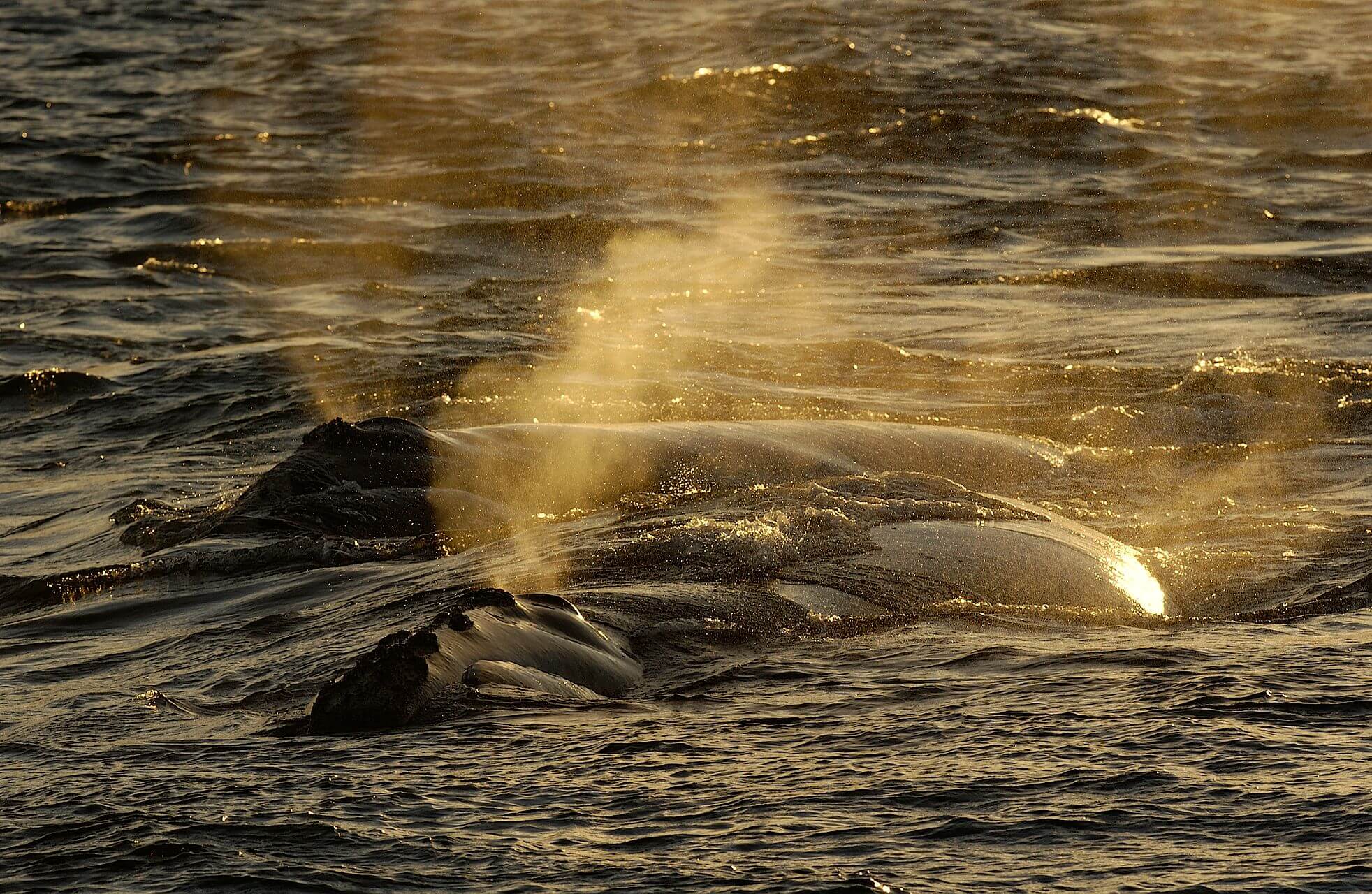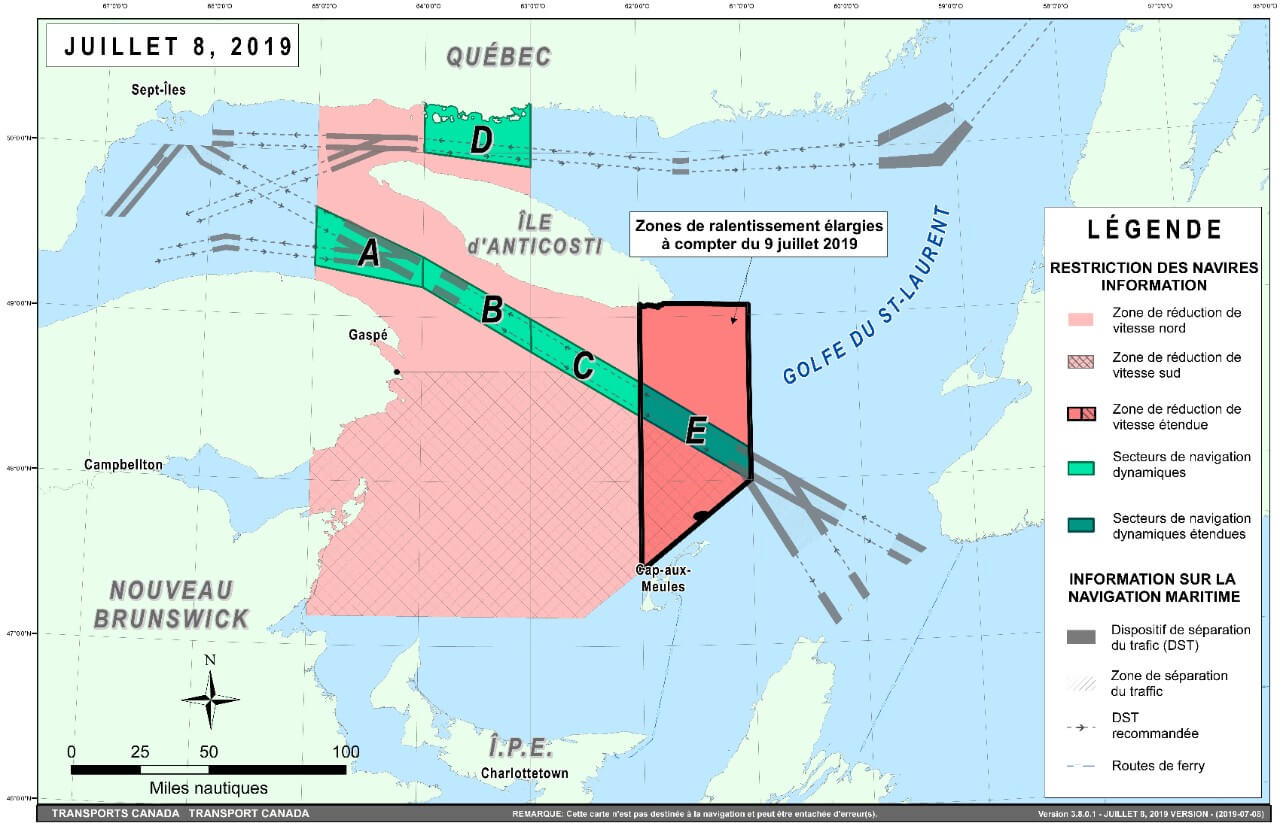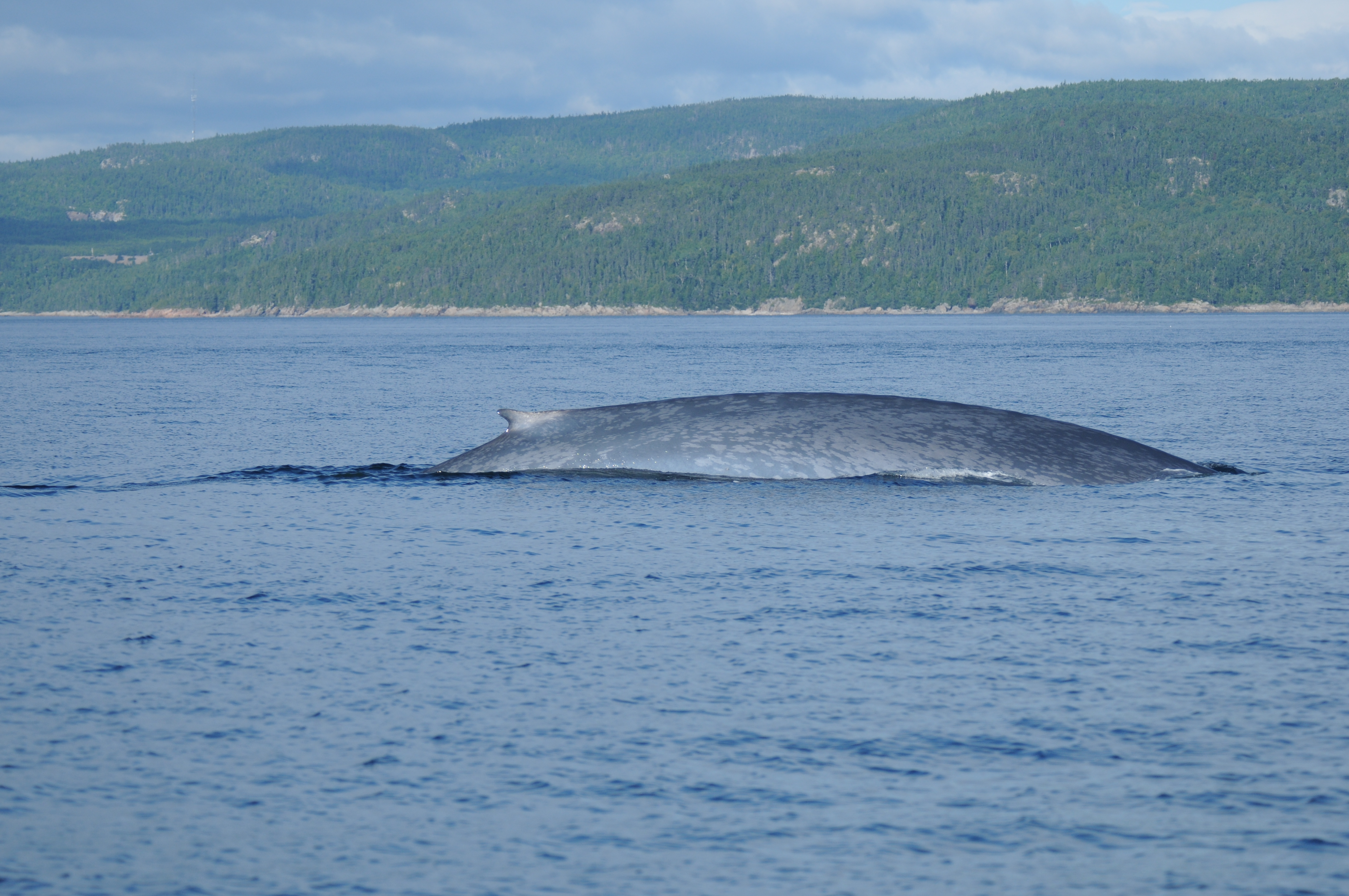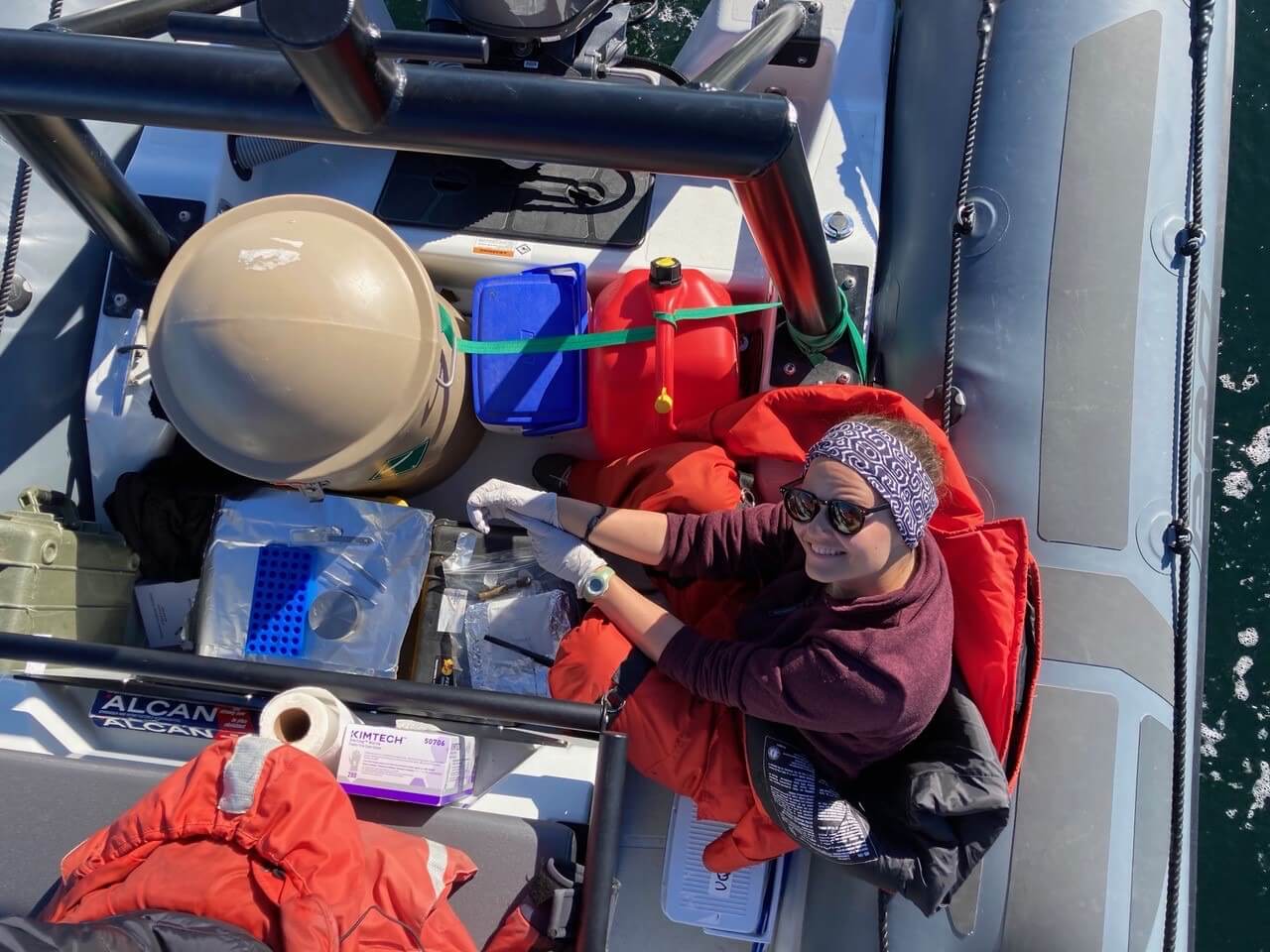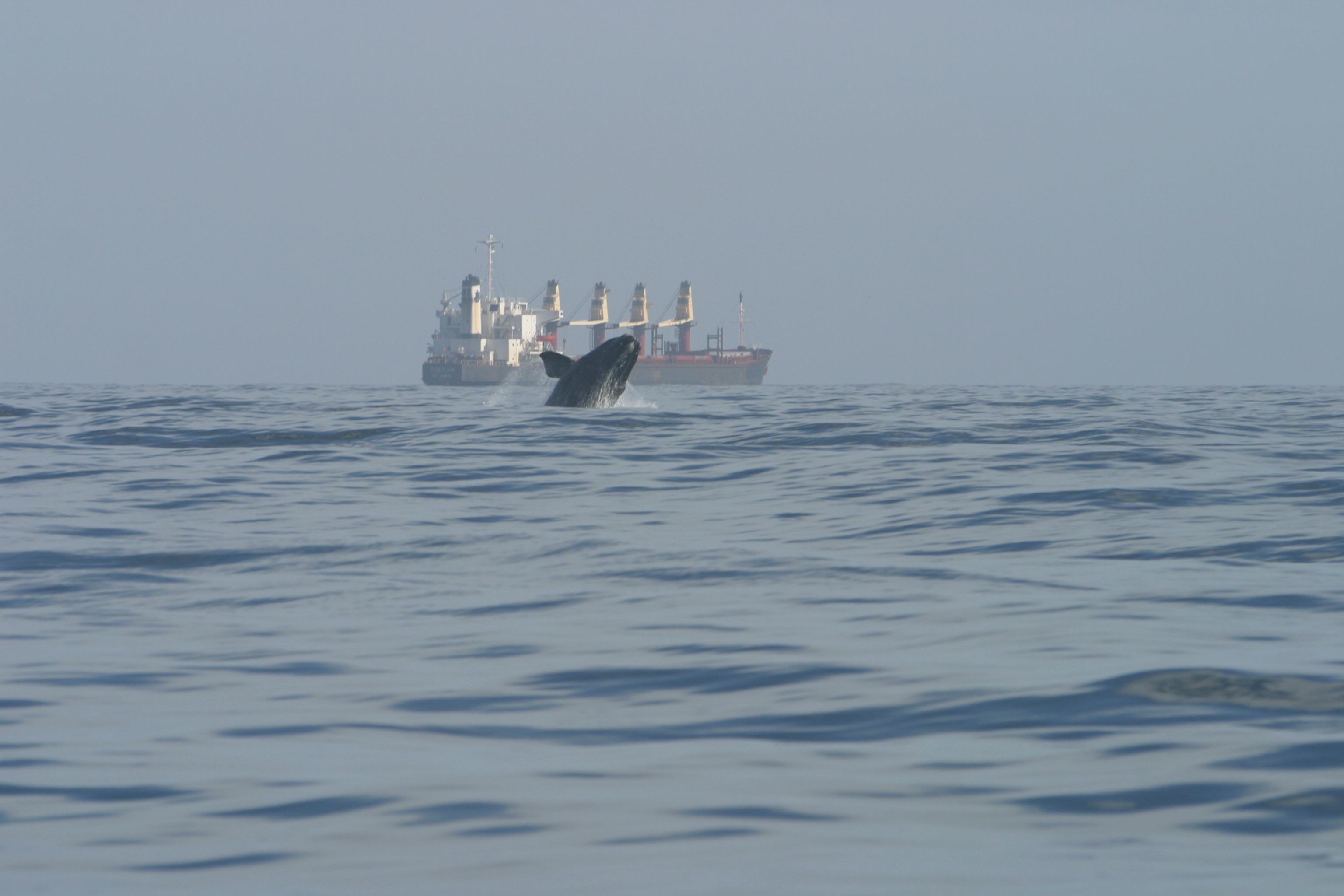Speed restrictions applied to a larger fleet, increased aerial surveillance, expanded speed limit area… The Government of Canada is announcing new measures to prevent entanglements and collisions. These measures are being put into place following the discovery of six carcasses belonging to the endangered North Atlantic right whale. Additionally, three right whales have been observed entangled in fishing rope in recent weeks.
Slowing down to reduce risks
Restricting vessel speeds protects whales from collisions in two ways: by reducing the risk of serious or fatal injuries if a strike does occur, and by increasing the odds that a whale will have sufficient time to react and avoid the collision. Boats over 13 metres in length will now be restricted to a maximum speed of 10 knots, whereas in the past this measure only applied to vessels exceeding 20 metres. The slowdown sector has also been enlarged.
However, speed restrictions are not without major impacts to those ships making deliveries to remote areas, such as the N/M Bella-Desgagnés, which supplies provisions to North Shore communities that are inaccessible by land. Additionally, tourist vessels on the shores of the Gaspé Peninsula, whether they are international cruise liners or wildlife observation boats, must slow down to 10 knots.
This speed is not chosen at random. In several parts of the world, speed reduction measures to 10 knots have significantly curbed the risk of collision and especially collision-related mortalities. This measure is notably used at the entrance to the Panama Canal, one of the busiest shipping lanes in the world.
In search of entangled whales
Since June 29, three right whales have been spotted entangled in fishing rope, placing them in a vulnerable situation. Since then, the Campobello Whale Rescue Team, which specializes in right whale disentanglements, has been on the alert. But in the vast expanse of the Gulf of St. Lawrence, finding an entangled but freely swimming right whale is extremely difficult. Aerial surveillance flights have increased from twice weekly to twice daily. One of the three whales was spotted again on July 9, but it was already too late in the day to place a radio tag on the rope that it was dragging. With a tag, its movements could be tracked, making it easier to locate the animal and intervene.
In a message to the media, Fisheries and Oceans Canada states that it is encouraged by aerial surveillance conducted on July 9, during which a total of 90 North Atlantic right whales were observed swimming freely in the Gulf. These right whales were mostly in the static fishing closure area, where since late April no stationary, unattended gear – i.e. equipment left by fishermen for a few hours to a few days before being removed – can be deployed.
Strict measures vs. economic risks
Not only do these measures meet the survival requirements for the species, they are also compatible with economic imperatives related to seafood exports to the United States, the main market for eastern Canada. In 2017, such exports were valued at $4.3 billion. However, the United States has passed the Marine Mammal Protection Act, which stipulates that all countries exporting seafood products to the US must prove that they have marine mammal protection measures comparable to their own. By the end of July, Canada must submit an initial report on its efforts to mitigate the impacts of its fisheries on marine mammals. The legislation will come into effect on January 1, 2022, and if the US considers that Canada has not taken ample action, the country could lose its main market for lobster and snow crab.
Current regulations governing Canadian fisheries may seem extremely restrictive for fishermen, but they make the country one of the best performers in terms of the number of certified sustainable fisheries. Today’s measures to protect right whales are a step in this direction.
To learn more
News release announcing new measures (Government of Canada, July 8, 2019)
On the entanglements: an 86-minute presentation given by expert Amy Knowlton of the New England Aquarium and two fishermen (WGBHForum, August 6, 2018)


